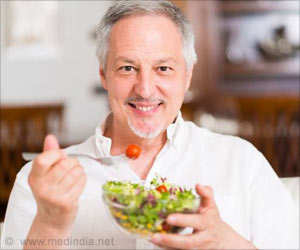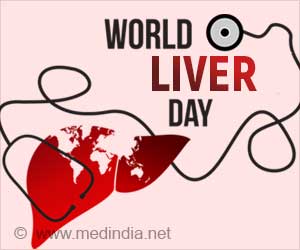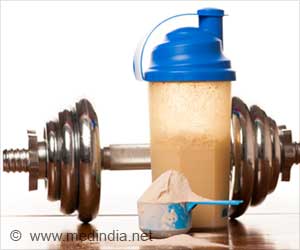- The myth that fresh fruits and vegetables are better than frozen or tinned may be going stale
- Freezing and canning preserve the nutrients of foods better and prevent spoilage
- Some foods like tomatoes are even more nutritious when canned
Fresh vs Frozen Fruits and Vegetables
It might be time to end the battle between fresh and frozen produce. Frozen and tinned produce can be just as nutritious as fresh fruits and vegetables, in some cases they may even be more nutritious (1✔ ✔Trusted SourceNutritional comparison of fresh, frozen and canned fruits and vegetables. Part 1. Vitamins C and B and phenolic compounds
Go to source). Some people may run at the sight of frozen or tinned vegetables because of the tag of ‘processed foods’ that comes with them. While these fruits might have preservatives, the quantities are strictly regulated and do not have any adverse effects on health.
The same preservation process prevents these foods from getting spoilt and maintaining their nutrients.
What about the Quality of Nutrients?
As soon as they’re picked, fruits and vegetables begin to lose nutrients. They can lose up to half of some nutrients within a couple of days of being harvested (2✔ ✔Trusted SourcePreharvest and postharvest factors influencing vitamin C content of horticultural crops
Go to source).
Vitamins like vitamin C are especially susceptible to being lost after being picked. Green peas, broccoli, and beans lose about half of their vitamin C within the first two days after harvest (3✔ ✔Trusted Source
A comparison of the vitamin C content of fresh and frozen vegetables
Go to source).
The reasons for the loss of nutrients post-harvest can be many. Exposure to light and air can initiate a chemical process called photo-oxidation, which causes nutrients to break down.
Additionally, the natural enzymes present in foods can also break down the nutrients. Microorganisms from soil, air, and water can also find their way into foods and feed on the nutrients (4✔ ✔Trusted Source
Types of Microorganisms in Foods
Go to source).
Therefore, freezing and canning can prevent spoilage and retain the nutrients of the produce.
The Two Sides of Heating: Canning and Freezing Foods
Canning involves adding heat to foods – typically using temperatures between 120 and 140℃ to preserve them. Even though foods are only subjected to these temperatures for a few minutes at a time, this inactivates certain enzymes and destroys most microorganisms, preventing the food from spoiling while ensuring many important nutrients aren’t lost.Freezing , on the other hand, removes heat from the food. By lowering its temperature enough that the water in the food freezes (around -20℃), this slows down the chemical reactions that occur in food, preventing essential nutrients from being lost. It’s also common practice to blanch foods prior to freezing. This also inactivates the natural enzymes in the foods, preventing further nutrient loss.
Thermal processes like canning or blanching can themselves lead to some inevitable nutrient loss. But the extent of this loss depends on the foods and the nutrients they contain.
Canning generally leads to a much higher loss of some nutrients than blanching and freezing. This is because it employs higher temperatures and harsher processing conditions, with most fruits and vegetables needing to be boiled in water before being sealed.
Foods like carrots, for example, lose very little vitamin C during freezing. But they can lose a significant proportion of their vitamin C during canning because it’s a water-soluble vitamin – meaning that it’s easily broken down in the water, especially after being degraded by heat.
Conversely, vitamin A loss is much lower during canning since it’s more stable against heat. In fact, more vitamin A is lost during the freezing process.
Nutrients in Frozen Foods Comparable to Fresh Foods
Though some nutrients can be lost during the blanching, freezing, and canning processes, in many cases the foods still retain more important nutrients than they would if picked just before peak ripeness and shipped to their destination supermarket. For example, research shows that the vitamin content of frozen blueberries is comparable – and sometimes even higher – than that of fresh blueberries (5✔ ✔Trusted SourceVitamin Retention in Eight Fruits and Vegetables: A Comparison of Refrigerated and Frozen Storage
Go to source).
While tinned peaches may lose some nutrients during the canning process, there’s then virtually no change in their nutrient levels even after three months in storage. The same is true of many other canned and frozen produce items, such as peas, sweetcorn, and broccoli, which keep many of their nutrients even after a year in storage.
The same applies to other compounds present in foods. For example, polyphenols – natural compounds found in most fruits and vegetables, some of which have been linked to better heart health – can be preserved for longer through freezing.
Finally, while there may be some differences in the nutrients available in fresh versus frozen or tinned produce, no one type of food is significantly better than the other. This is true in most cases.
Tinned Tomatoes Beat Fresh Ones
The exceptions include lycopene in tomatoes, the compound that gives tomatoes their red color, which is actually higher in canned tomatoes than in fresh tomatoes. There are several reasons for this – such as the high temperatures used during canning, which helps to release more lycopene. And since it is linked with a lower risk of cardiovascular disease, you may want to consider buying canned tomatoes instead – or canning fresh tomatoes yourself (6✔ ✔Trusted SourceAn Update on the Health Effects of Tomato Lycopene
Go to source).
Frozen and canned fruits and vegetables are a great way to get the nutritional benefits of fresh produce without breaking the bank. And in the midst of our current food shortages, they can be a more accessible and longer-lasting option.
References:
- Nutritional comparison of fresh, frozen and canned fruits and vegetables. Part 1. Vitamins C and B and phenolic compounds - (https://onlinelibrary.wiley.com/doi/10.1002/jsfa.2825)
- Preharvest and postharvest factors influencing vitamin C content of horticultural crops - (https://www.sciencedirect.com/science/article/abs/pii/S0925521400001332)
- A comparison of the vitamin C content of fresh and frozen vegetables - (https://www.sciencedirect.com/science/article/abs/pii/S0308814697001659?via%3Dihub)
- Types of Microorganisms in Foods - (https://onlinelibrary.wiley.com/doi/10.1002/9781119237860.ch3)
- Vitamin Retention in Eight Fruits and Vegetables: A Comparison of Refrigerated and Frozen Storage - (https://pubs.acs.org/doi/10.1021/jf5058793)
- An Update on the Health Effects of Tomato Lycopene - (https://www.annualreviews.org/doi/10.1146/annurev.food.102308.124120)
Source-Medindia









